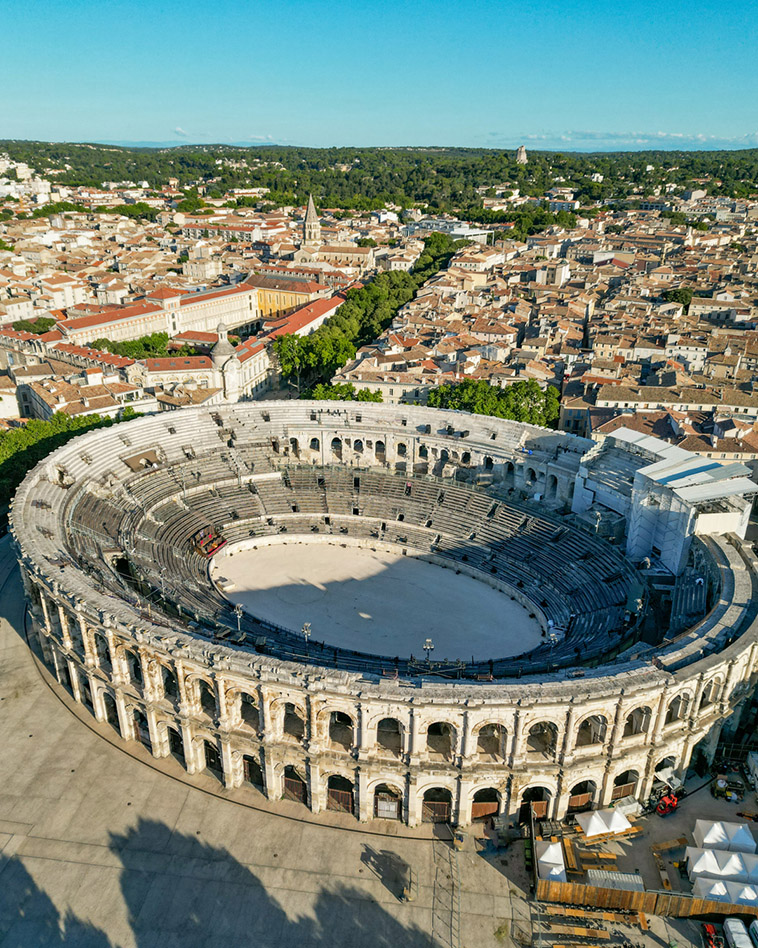Nimes Arena: France’s Colosseum

One can probably say that Rome’s Colosseum has a sibling and it is in France. Nimes Arena is one of the biggest and most preserved Roman amphitheaters in the world. It was built just a short while after the Colosseum, therefore, the resemblance is quite uncanny.
Histoires de patrimoine
Nimes Arena was built around 100 BCE, although no record is quite certain. It is 133 meters long and 101 meters tall, making it one of the tallest Roman structures in the world as well. Out of the 400 official Roman amphitheaters, Nimes Arena ranks as the 20th largest.
Around 120 BCE, today’s Nimes belonged to a Gaulish tribe, in fact, it was their capital. The Gauls and the Romans had one of the most antagonistic relations in ancient history as they constantly went to battle and raided each other’s provinces. When the Romans conquered the area, they took over the capital and named it Nimes after a deity in Celtic mythology.
Shortly after conquering the Gaulish capital, Emperor Augustus quickly founded a Roman city there which began to prosper immediately. As the city gained more and more citizens, it became a necessity to give the crowd a place to entertain themselves and watch shows. The answer of the empire was Nimes Arena.
The arena could support up to 24,000 spectators who had 34 tiers of terraces to sit and enjoy the events which mainly consisted of gladiator fights and chariot racing. However, as the Roman empire grew weaker, the city ...
Source:
themindcircle
URL:
http://themindcircle.com/category/architecture/
| -------------------------------- |
| Panel discussion - the line between art and design with Aritco | Design | Dezeen |
|
|












